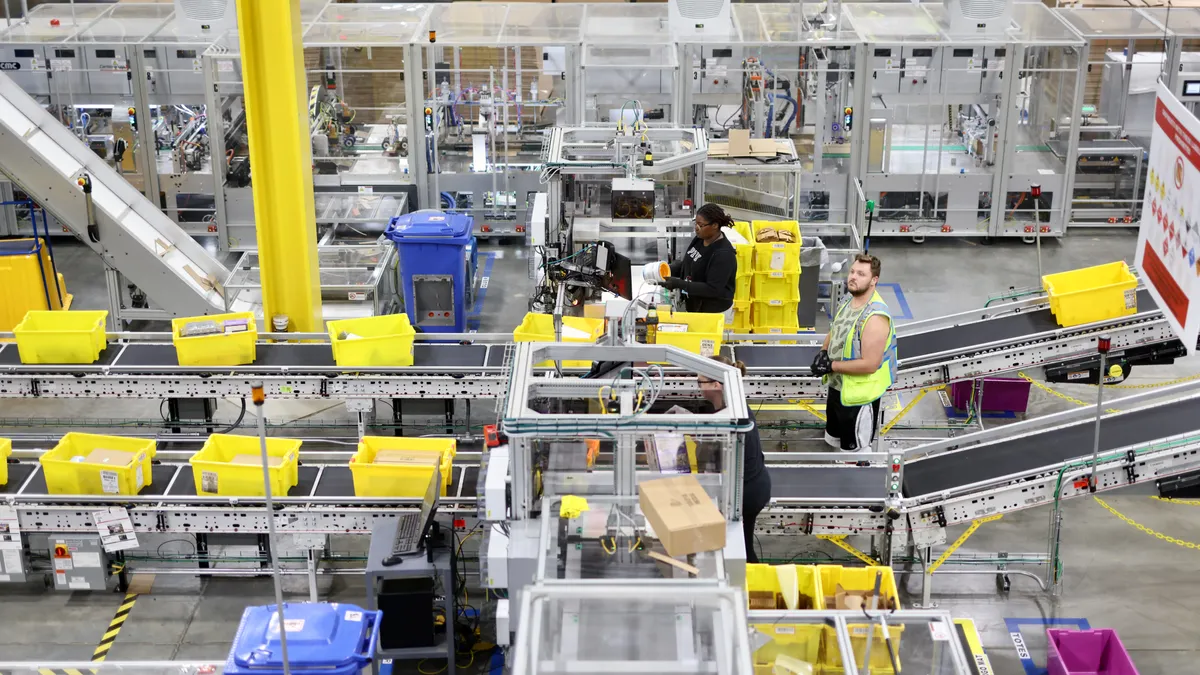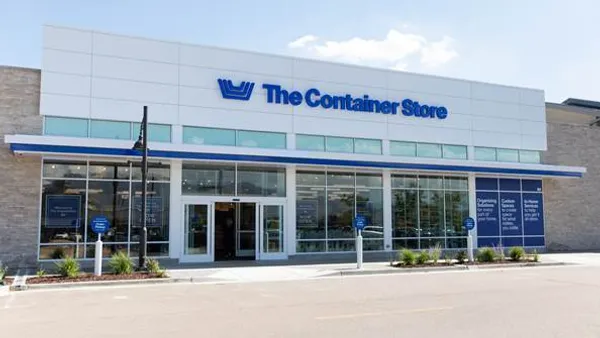Dive Brief:
- Amazon is experiencing tight capacity at some West Coast facilities due to high demand, the company said in an announcement to third-party sellers Thursday.
- The constraints are leading to lengthier processing times for seller inventory at inbound shipping locations and palletized freight. "We’re continuing to monitor the situation and are working hard to ensure your inventory is placed before your deals start," Amazon said.
- The e-commerce giant said it is rerouting shipments to other regions to relieve capacity. It has also extended the automatic closure and abandoned shipment windows for shipments created between Aug. 7 and Oct. 31.
Dive Insight:
Ahead of the 2024 peak season, Amazon pushed sellers to bring products into its network earlier than last year to ensure fast delivery speeds during the holidays. Sellers that haven't done so may have to brace for delays due to Amazon's recent capacity constraints.
"The congestion primarily originates from the inefficiencies in Amazon's cross-dock network, where the distribution from national and regional cross-docks to fulfillment centers has been severely delayed, potentially adding weeks to standard inbound times," Jon Elder, founder and CEO of the Amazon seller consultancy Black Label Advisor, said in a LinkedIn post.
Amazon has pushed sellers to transport their inventory to its network in one of two ways this year, leading to the cross-docking inefficiencies, Rob Hahn, chief operating officer at Pattern and a former Amazon executive, said in an interview with sister publication Supply Chain Dive.
One method is by bringing inventory to Amazon's closest national cross-docking facility for a fee, after which Amazon distributes the products to different locations. Hahn said this creates an extra touch in the process and added lead times.
The other approach is for sellers to send inventory to multiple locations themselves to avoid the fee. This results in more less-than-truckload shipments for facilities to handle, as many sellers don't have the volume to fill up a truck destined for one particular regional facility, Hahn said.
"It has slowed down the efficiency in those buildings, which does have knock-on effects in the capacity of these buildings," Hahn said.
To ease capacity constraints, Amazon is also providing added incentive for sellers to ship their inventory to areas with more space available.
The company has temporarily reduced its inbound placement service fee for sellers using its "minimal shipment splits" plan — or sending inventory to a single location — if their products are going to the Eastern U.S., an Amazon spokesperson said in a statement. The fee's rate range is now 5 cents lower per unit.
Even factoring in Amazon's efforts to mitigate the issue, sellers should have emergency inventory at third-party logistics locations on both the West Coast and East Coast to mitigate their exposure to Amazon-related delays, Elder said.
Larger sellers may look to use full truckload providers to get products in on time, while lower-volume businesses could opt to use parcel carriers for inbound shipping, even though it could lead to higher transportation expenses, according to Hahn.
"That's the cost of doing business this peak," Hahn said.















